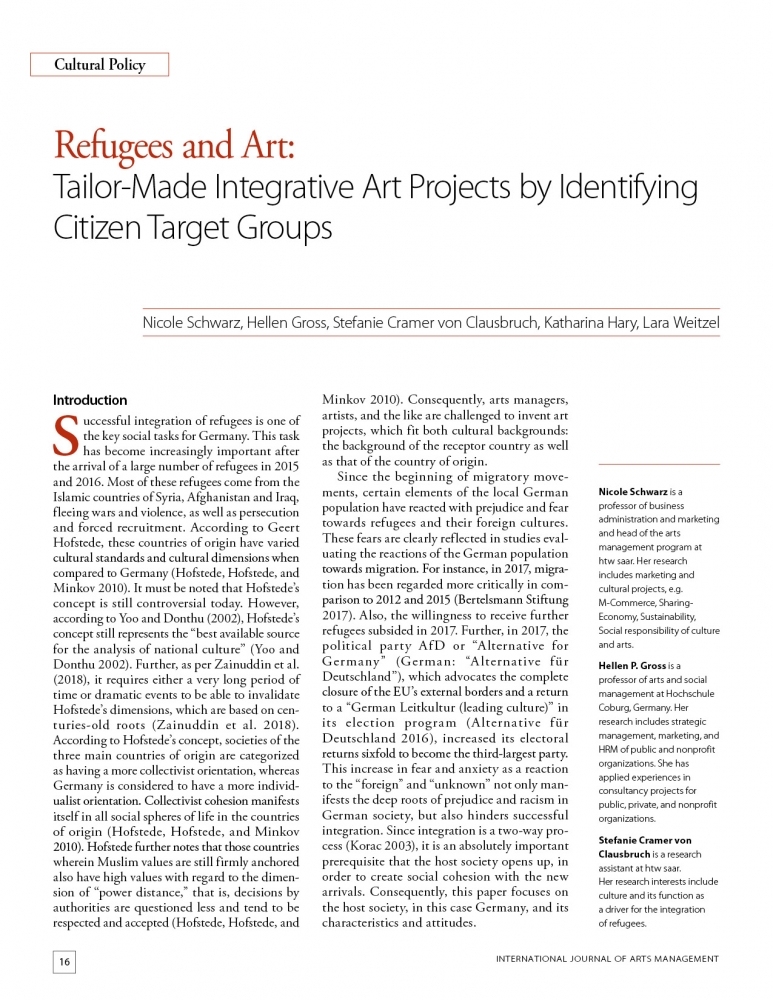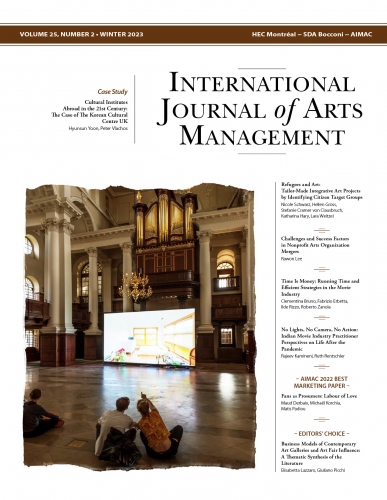Refugees and Art: Tailor-Made Integrative Art Projects by Identifying Citizen Target Groups
Product: Article
$21.00 CA
Nicole Schwarz, Hellen Gross, Stefanie Cramer von Clausbruch, Katharina Hary, Lara Weitzel
Nicole Schwarz is a professor of business administration and marketing and head of the arts management program at htw saar. Her research includes marketing and cultural projects, e.g. M-Commerce, Sharing- Economy, Sustainability, Social responsibility of culture and arts.
Hellen P. Gross is a professor of arts and social management at Hochschule Coburg, Germany. Her research includes strategic management, marketing, and HRM of public and nonprofit organizations. She has applied experiences in consultancy projects for public, private, and nonprofit organizations.
Stefanie Cramer von Clausbruch is a research assistant at htw saar. Her research interests include culture and its function as a driver for the integration of refugees.
Katharina Hary is a research assistant and doctoral candidate at htw saar. In her research she focuses on arts management (e.g. cultural activities and their influence on the integration of refugees).
Lara Weitzel is a research assistant and doctoral candidate at htw saar. In her research she focuses on arts management (e.g. Audience Development for cultural institutions / Digital strategy development).
ABSTRACT
This study aims to find out if there are differences between non-participants and participants in Integrative Art Projects (IAPs), with regard to their attitudes towards integration, refugees, and IAPs. Further, with regard to IAPs, this study identifies different audience groups among German citizens, each possessing specific attitudes and characteristics. Methodologically, a survey has been conducted among n = 702 German citizens, and four citizen groups are defined through cluster analysis. The results show that participants in IAPs are more open-minded towards refugees and foreign cultures, compared to non-participants. By pointing out the individual characteristics of the defined clusters (“The open-minded,” “The critical,” “The uninvolved,” “The preservers”), the study derives precise managerial implications for arts organizations, so as to adapt IAPs and their promotion to the needs of cluster-members. Participatory IAPs at eye-level and with challenging common goals are possible, especially for the cluster of “The open-minded,” while for other clusters, greater focus should be devoted to identifying commonalities and learning about the out-group.
KEYWORDS
Integration, Citizens, Refugees in Germany, Arts Projects, Cluster Analysis

